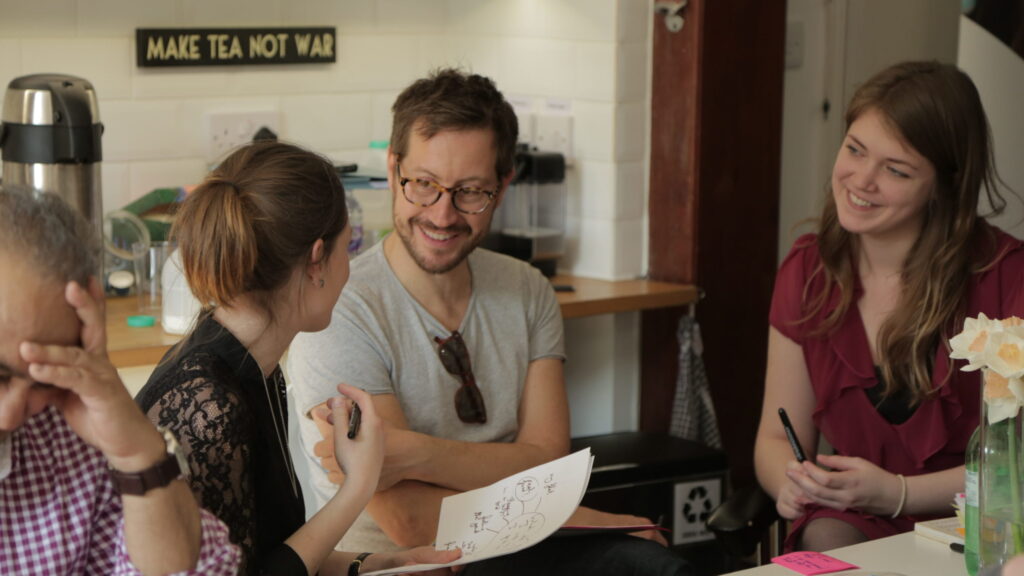Why wellbeing is the top priority for leaders.
Wellbeing at work is a hot topic. Undoubtedly the pandemic has shed a new light on it as governments, companies and individuals have had to make the preservation of health their number one priority. But as we consider the future of work post-pandemic, wellbeing needs to continue to be given the attention it deserves.
Openness builds trust
Two years ago, I had a breakdown. It was caused by stress and the stress was caused by work. On paper I was highly engaged, but low-level stress steadily bubbled away over several months and eventually boiled over. In retrospect, I’m glad it did. It was surprisingly straightforward to clear up and I am now more empowered to manage the stress-signals before they become a problem.
I quickly found out that when you reveal your vulnerabilities as a leader (aka human being), people’s first reaction is not to confirm how bad you are at your job, but to activate the practical and emotional support you need to get back to your best self. The act of being helped by peers, strengthened the trust between us and created a shared experience of wellbeing from having been in it together.
Time to talk
Wellbeing can refer to your physical vitality (body), your mental fitness (mind) your emotional wellbeing (heart) or your sense of meaning and motivation (purpose), all of which are inextricably linked. Not everyone finds it easy to talk about one or more of these wellbeing elements. For many leaders, seeking help with your wellbeing can feel risky or exposing. The problem for leaders is that we’re not taught to be open and vulnerable, we’re taught to be credible and ‘strong’.
As a result, there’s a tendency to put elements of personal wellbeing on the backburner and let them simmer away unchecked. We don’t make a habit of talking about wellbeing when things are okay, and we often avoid talking about it when things are not okay, which is a contributor to stress.
Stress is heightened for leaders as they fall into ‘the acceleration trap’, doing more and more to navigate volatile and uncertain trading conditions, while carrying a high level of expectation. And that gets passed on to frontline teams. 9 in 10 employees have been touched by mental health challenges – among Millennials, this figure rises to 93%; yet 95% of people who take time off for stress cite something else as their reason for taking time off. We’re just not comfortable talking about it.
Yet, habitually talking about wellbeing promotes feelings of wellbeing. We tested this with 450 people leaders in the aviation industry, who feel distinctly bruised if not burnt out by a year of keeping their airports in business when no one is flying. We set up a series of virtual classrooms designed to get them talking about their personal experiences of leading through the pandemic and give them tools to build trust, respect, and hope for the future amongst their teams. The most striking outcome was the difference in how leaders felt before and after the sessions. Just one hour of talking about their own wellbeing moved leaders from describing their feelings as “tired”, “anxious” to feeling “energised”, “together” and “hopeful”.
Healthy high performance
Moving from managing stress to nurturing healthy high performance in organisations starts with a wellbeing strategy that reflects their business purpose. Despite the current context, in many organisations wellbeing is still regarded as a set of products, policies and partnerships. Yet take up of wellbeing services such as EAP, financial planning and mental health first aid can be as little as 20%. So, a different approach is needed that integrates wellbeing with daily operations and team culture. Imagine the difference at dinner tables across the country if everyone came home from work in a better state than they went in.
A meaningful wellbeing strategy coupled with leaders who are comfortable to role-model openness and empathy are the foundations of businesses who are healthy by design. We need to invest in wellbeing and talk about it. It needs ongoing, positive attention to create cultures of high trust, healthy high-performance and psychological safety. Wellbeing at work matters.
For more on content on wellbeing click here
